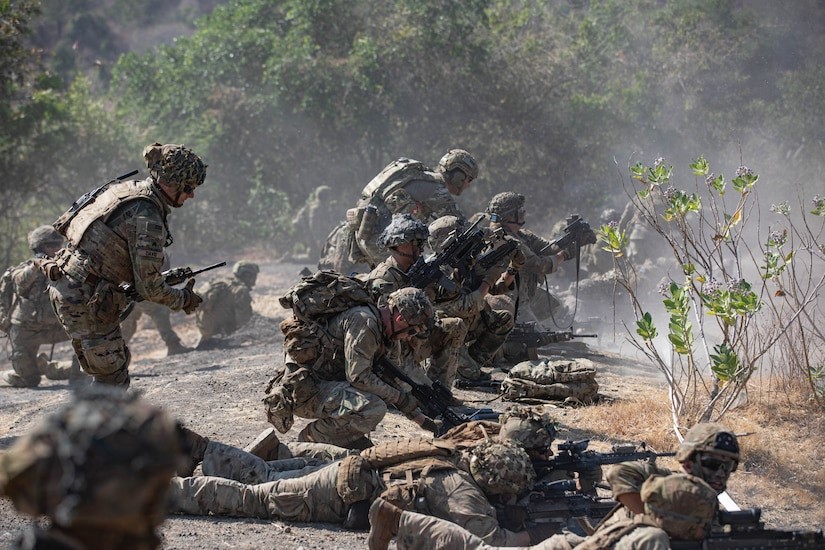The nightmare scenario that the Obama-Biden Administration gambled on never occurring is now taking place. The Obama administration ended the Pentagon’s “two-war” doctrine in 2012, and America is no longer capable of fighting more than one conflict at a time.
As 2023 draws to a close, Russia is at war against Ukraine. Iran, using its proxy Hamas, is at war with Israel. China is increasingly aggressive against Indo-Pacific nations, and may eventually attack Taiwan.
These aggressive powers are increasingly growing closer. Russia and China hold joint military exercises. Iran supplies Putin with drone weapons to use against Ukraine.
The U.S. Institute for Peace reports that “Iran has become increasingly reliant on China to survive existential crises, including diplomatic isolation, regional tensions and a rocky economy. In March 2023, China—Iran’s largest trade partner—brokered an agreement between Iran and Saudi Arabia to restore diplomatic ties seven years after severing relations. The deal reflected Beijing’s growing influence and interest in Iran. “China is trying to translate its economic power into political power,” Nasser Hadian, a professor of political science at the University of Tehran, told The Iran Primer. “Iran is very important as a source of energy, but also as a provider of the security in the region. In the future, Iran and China are going to be very closely interdependent.”
CNA reports that “There is widespread consensus among analysts that, although Russia and China have been moving toward closer cooperation through the entire post-Soviet era, the trend has accelerated rapidly since 2014. The relationship was boosted by Russian leaders’ belief that Russia could survive its sudden confrontation with the West only by expanding alternative relationships. China was the obvious candidate because it had a suitably large economy.”
China has taken note of the reduced size of the U.S. military, as well as the diminished capability of the American industrial base to provide the weaponry needed to resupply Ukraine. The U.S. Navy continues to shrink, and China has a substantial numerical lead, just as Russia has a lead in nuclear weaponry.
Previewing the forthcoming 2023 China Military Power Report, Ely S. Ratner, assistant secretary of defense for Indo-Pacific security affairs said DOD assesses that the Chinese Communist Party is increasingly turning to its military as “an instrument of coercion in support of their revisionist aims” with an eye toward restructuring the international order and undermining global peace and stability.
That assessment, he said, is evidenced by China’s rapid expansion of its nuclear forces and increasing provocations by its air and naval forces against U.S. allies and partners operating in the region under accordance with international law.
Ratner also noted China’s lack of interest in maintaining open lines of communication with U.S. defense officials, noting that Beijing has declined multiple invitations to communicate directly with Secretary of Defense Lloyd J. Austin III and other senior Pentagon policymakers.
According to U.S. army General Charles A. Flynn, the U.S. army commander in the Pacific, There are three things that the Chinese military has that the U.S. military, allies and partners in the region do not have. They have interior lines,” he said. He noted that they’re just 100 miles from Taiwan, and they have anti-access, area-denial means to keep opposing forces at a distance—such as missiles, aircraft and ships, as well as cyber and space capabilities. “The second thing they have is mass,” he said, meaning they have a very large military force. “The third thing they have is magazine depth,” he said, which would include large quantities of stand-off munitions.
Unlike the aftermath of Pearl Harbor, the U.S. industrial base is not capable of rapidly making up these deficiencies.
Picture: U.S. troops station in the Pacific
